COUNTRY MARKET COMMENT
HMRC has stated that at least 15,700 buyers overpaid stamp duty last year. Are you, or your buyers, making incorrect assumptions about purchase costs?
First quarter London results are up on last year. This says something about us, more about the headlinedefying activity of the markets in which we operate.
NEW HOMES & DEVELOPMENTS

Should you consider self-build?
Historically 10% of all new build houses, interest in self-build is growing from both the well-heeled and those starting out.
N O 41 WWW. UKMARKETREVIEW .CO.UK 2018
LONDON MARKET COMMENT
ARE YOUR STAMP DUTY SUMS CORRECT?
Despite the high cost of stamp duty, some buyers and, surprisingly often, their professional advisors, are getting their tax calculations wrong, prompting would-be movers to hold back and others, HMRC has confirmed, to over-pay by tens of thousands.
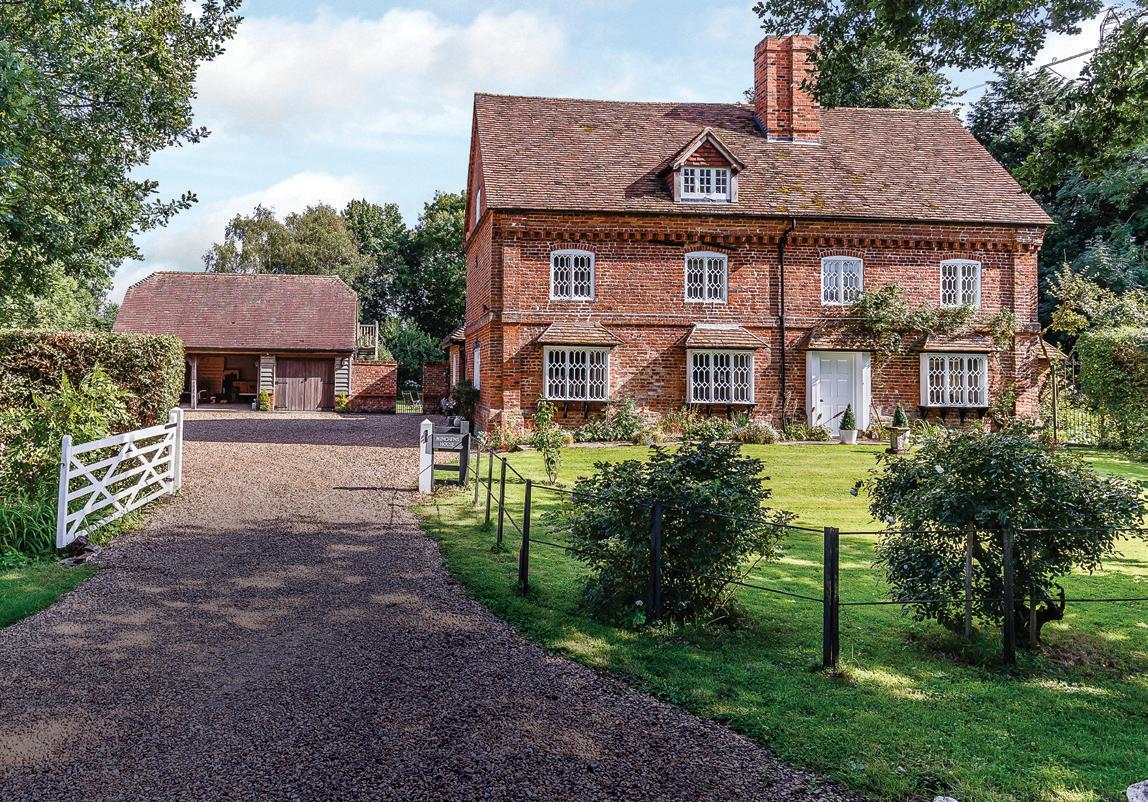 Country Market Comment
Country Market Comment
UK Market Review | N 0 41; 2018 2 UK Market Review | N 0 41; 2018 3 Hampshire £1.55 million guide Front cover: Cheshire £4.25 million guide
Our Wilmslow office recently saved one well-heeled buyer several hundred thousand pounds in Stamp Duty Land Tax (SDLT), merely by pointing out one aspect of the current rules. Another nearly fell foul of a much more common misinterpretation, the clarification of which reduced their tax bill by £18,000 to £20,000. Why the confusion?

The most common misunderstanding concerns liability for the 3% additional property surcharge (lifting SDLT on a £600,000 home from £20,000 to £38,000). HMRC say they get calls about this every day and that over 15,700 buyers overpaid last year. Some assume that owning any other property triggers liability for this. But it should not apply when replacing your “principal place of residence”
and, if you move before selling your previous home, you have three years to claim the 3% surcharge back, when you do. Thus, to take one example, when the owner of a buy-to-let property who sold her main residence to live abroad, returned and bought a replacement, she did not have to pay the 3% surcharge. Similarly, the buyer of a four bed cottage with one bed studio who mistakenly paid a £20,000 surcharge, was able to claim it back.
The second issue concerns mixed use properties. CGT liabilities loom large here but, where a purchase includes, for example, offices or land that is clearly agricultural, commercial SDLT rates can apply. In the case of one Midhurst buyer of a farmhouse with 50 acres, the difference was £186,750.
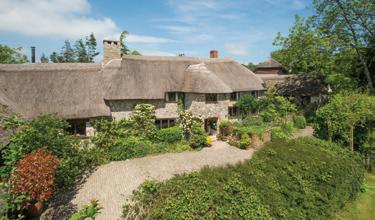
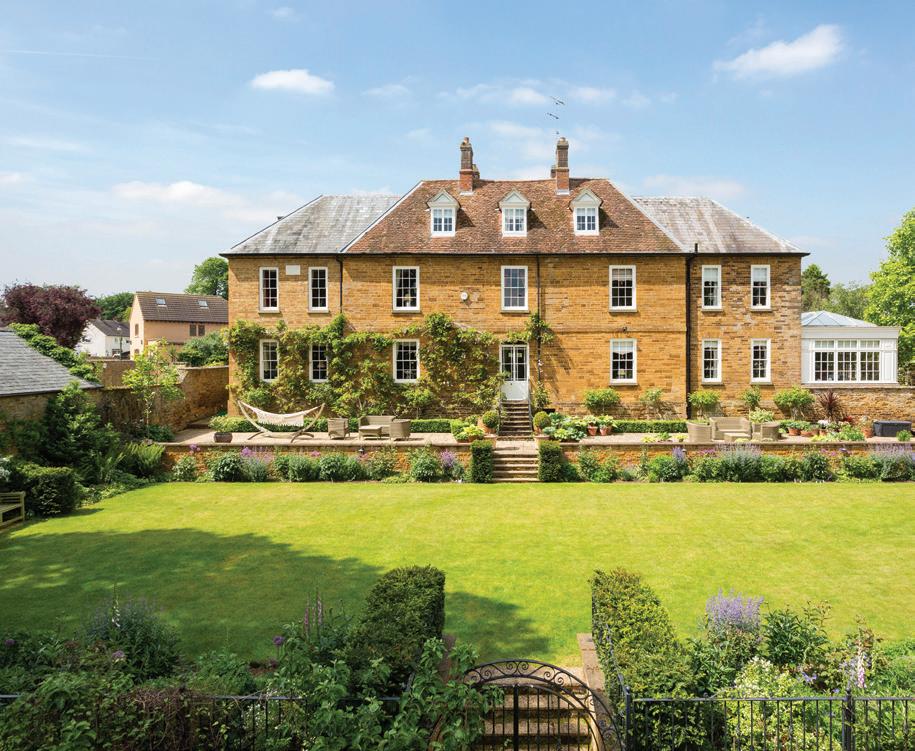
Relief is also available if buying multiple dwellings in a single transaction. The process takes into account the tax that would be paid on the individual average price, as opposed to taxing, say, five £200,000 houses as if they were a single £1 million property. It applies a minimum rate of 1% but, again, can make a substantial difference. Ultimately, HMRC deals with all purchases on a case-by-case basis.
GOOD VALUE FOR THOSE TRADING UP
In an economy subdued by tight credit controls, political uncertainties and affordability limits, the market over around £1.25 million has been especially hard hit by high property tax rates. This has pushed prices down disproportionately (i.e. by more than the extra SDLT) just as demand for good family houses below £1 million continues its relative strength. The upshot of this is that, whilst would-be downsizers are left feeling a little disappointed by just how far down they’ll have to go to realise the cash they want, those trading up to what our back page writer might refer to as “a very big house in the country” can get a lot more for the price difference, than at this time last year. Especially if they can pay less stamp duty than envisaged, as well.
Country Market Comment
Above inset: Devon £1.275 million guide
This image: Northamptonshire £1.5 million guide
4 UK Market Review | N 0 41; 2018 5 UK Market Review | N 0 41; 2018
Surrey £1.35 million guide
REBUILDING THE FOUNDATION
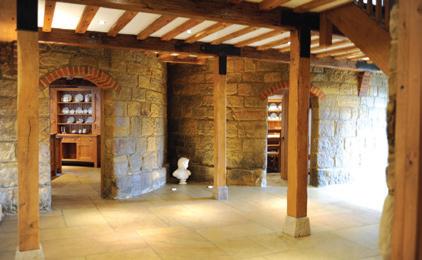
Buyer sensitivities to price and purchase taxes are heightened at present by their awareness that any medium-term capital gains are likely to be modest. Over the coming four or five years, no mainstream commentators expect average UK prices to fall, but none expects them to rise more than around two or three percent each year, either. Yet such averages mask the regional picture which, from our perspective at least, is one in which:
• Demand is rising from the bottom of the market upwards, in sharp contrast to the boom years.

• Values in areas which never recovered, post2008, to their previous highs, are slowly but surely catching up. These include Cornwall, West Midlands and Yorkshire.
• Strong growth in values is following investment in infrastructure. This is happening at small scale (e.g. new train stations Worcester Parkway, Warrington West and Marsh Barton, Exeter) and whole regions: across the Greater Manchester area, urban land values rose nearly five-fold last year, showing the confidence that house builders have in future demand.
LEVEL RENTS BELIE TURMOIL
Don’t be misled by the fact that, countrywide, average rents have risen by just 1.1% over the last year.* The ‘push and pull’ between the rental and sales markets has rarely been more energetic, producing significant movement in rental values both regionally and between different kinds of property.
Once again, tax changes are in the driving seat, as landlords are incentivised to sell, those who have never owned a property, to buy, and those who would previously have bought a large country house, to rent. This is creating new ‘accidental landlords’ (owners who let their property because they cannot get the price they want) in some market sectors,

just as others (many of whom have accidentally done remarkably well out of the deal), leave. What remains unchanged, though, is a country market in which most demand comes from people who would prefer, if they could, to be owner-occupiers. People who, in a sense, are ‘accidental tenants’ – and thus more demanding. Key market points are given below.
These points indicate slowly improving affordability for those reliant upon earnings, not inheritance or capital growth. So much capital growth over the last 20 years has been fuelled by overseas money, flowing out from the very top end of the London market, that affordability reached clearly unsustainable levels, even with record low interest rates. High stamp duty and other taxes have dampened that top end demand but, if affordability at lower levels continues to improve, the overall market will reconnect, to the benefit of buyers and sellers alike.
MORE TERMINATING TO BUY FOR FIRST TIME
The number of younger tenants who have long wanted to buy and now find that they can has, from a low base, been growing steadily. At the end of last year, the number of FTB mortgages granted was 20% up on 2014** and is growing faster now. This will continue.
LANDLORDS SELLING IN SOUTHEAST INVESTMENT & RETURNS RISING IN NORTH HIGH QUALITY DEMANDED AT ALL LEVELS

Most rents in the southeast have been unchanged, or in slight decline, especially for typical investment properties.
Meanwhile, mortgage relief and capital gains tax changes have increased landlord costs.
Two years after the ‘rush to buy’ early in 2014, many are
also having to remortgage and conform to tougher credit controls, also pushing up costs. We expect the trend towards selling in the southeast – and for a small minority to buy at lower price levels in the north – to continue. Beyond the SE, rent rises of 2 – 4% are typical.
Even at ‘starter levels’, those used to plush student digs with en-suites and more, will not rent a shabby flat. At the other end of the scale, ‘faded grandeur’ is of no interest to the growing number of expats wanting a large house. Smarten up, or face long voids!

Country Market Comment Country Rentals
*ONS Index of Private Housing Rental Prices **Ministry of Housing, Communities & Local Government
Kent £3,250 per month. Demand for modernised larger properties to rent is growing.
Top: Cheshire £1.25 million guide
Above right: Suffolk £1.5 million guide
6 UK Market Review | N 0 41; 2018 7 UK Market Review | N 0 41; 2018
Left: Cornwall £1.275 million guide






































Hale £500,000 (plot) Ipswich £495,000 Chichester £455,000 Cranbrook £500,000 Chipping Campden £445,000 Cirencester £535,000 Dorchester £445,000 Goring £525,000 Dorking £475,000 Exeter £350,000 Bridport £395,000 Blandford £455,000 Arundel £499,950 Barnstaple £450,000 Burford £465,000 Burnham Market £550,000 Chester £475,000 Chelmsford £375,000 Bury St Edmunds £475,000 Canterbury £365,000 What will £500,000 buy where you live? Newbury £450,000 Midhurst £450,000 WHAT WILL £500,000 BUY WHERE YOU LIVE? Newmarket £515,000 Reigate £495,000 Taunton £450,000 Tunbridge Wells £525,000 Wilmslow £549,995 Northampton £538,950 Oxted £524,950 Norwich £450,000 Sevenoaks £399,950 Sherborne £450,000 Shaftesbury £350,000 Truro £385,000 Weybridge £525,000 Winchester £475,000 York £275,000 Woburn £575,000 Examples from our offices outside London Please note that place names are for the relevant office, not the location of the property shown. UK Market Review | N 0 41; 2018 UK Market Review | N 0 41; 2018 8 9
MIDDLE MARKET MOVES
Amid headlines of price drops and estate agencies suffering huge income reductions (don’t all cry at once), our London Q1 results were better – volumes and fee income – this year, than last. How come?
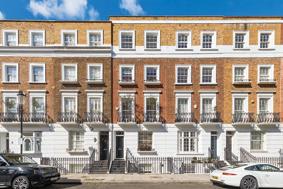

UK Market Review | N 0 41; 2018 UK Market Review | N 0 41; 2018
London Market Comment Main
&
Street, Chelsea SW3 £4.45 million guide 10 11
photo
above: Moore
Surprisingly to many, our first quarter figures for London, when compared with 2017, show a modest but inflation-beating increase in income, and in the number of transactions, for both sales and lettings. Given the low level of Land Registry recorded sales over the last year and the decline in many areas in capital
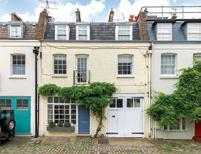

values and rents, does this mean that Jackson-Stops London has, through market-bucking brilliance, succeeded, whilst all around have failed? We’d like to think that there is a bit of that but, for the most part, it is a result of the spread of markets in which we operate, few of which have been as dramatically affected as the headlines might suggest.
To start with, our London business has always been evenly balanced between sales and lettings. Historically, this has meant that we’ve been OK throughout the traditional see-sawing of the fortunes of the two. In recent years, it has also meant that we have been well-placed to help the growing number of owners who would be happy to sell or let, so long as the deal is right.

In central London right now, demand for large houses to buy, is a fraction of what it was: aggregate Kensington & Chelsea sales recently have been less than 100 per month (LonRes). But top-end rentals have never been so popular: our lettings at £5,000+ per week are over 40% up on last year at the time of writing. This has prompted an even greater increase in supply, as owners prefer to wait out current uncertainties in preference to crystallising any reduction in capital value. Indeed, at all price levels, the question ‘Should I let or sell?’ is being asked of us almost every time a tenancy ends at the moment. Financially, the answer is rarely clear-cut but, for every landlord deciding that it is no longer worth the candle, an owner-occupier moving away for two or three years, opts to let, rather than give up that foothold in London. Rents thus remain soft and it is striking that, across the lettings market as a whole, activity has remained high throughout a period of small but sustained rent reductions.


UK Market Review | N 0 41; 2018 London Market Comment
UK Market Review | N 0 41; 2018
Right: Bankside SE1 £3.5 million guide Below left: Stanwell Village TW19 £1.2 million guide
Eccleston Square Mews SW1V £2.5 million guide
13
Teddington TW11 £2.25 million guide
MID MARKET BREXIT BETS
Secondly – and unusually for a prestige national brand – we have a culture and structure which enthusiastically embraces the middle market. Admittedly, that still means £1 million for a flat in SW1 or a house in SW20, but this is where the sales have been in recent times. It is also where we are seeing fascinating trends now. Specifically, for many months, caution about economic prospects (even hardened London Brexiteers expect pain in the short-term) appears to be prompting movers to stay local. Growing families who would, previously, have moved out from say, Pimlico to Teddington or Weybridge, are either staying put and extending, or moving locally. Chelsea house owners who, on receipt of a good bonus, would almost automatically have bought a country house, are holding cash instead. Most interestingly though, more and more better-off tenants (often supported by family trusts), having actively held back from buying for at least two years, are now looking to buy. This is very much a Brexit bet. Their view is that the worst case scenarios will be avoided, ‘uncertainty’ will not affect the market any more than it has and that, when things become clearer, values will increase. In other words, that if you want to buy, there is no longer any point in holding back.

WHAT ARE YOUR HOLIDAYS FOR?
Having decided to get serious about buying abroad, asking whether to buy into an established tourist development, or away from the conveniences of a managed environment, often throws up more personal questions.
TECHNICALLY PERSONALISED
Finally, of the areas in which we think we have been stealing a march on our rivals, perhaps the most visible has been our use of technologies. Learning a wealth of valuable lessons from our exceptionally successful New Homes team, we have been introducing engaging technologies such as touchscreen window displays and personalised online advertising. These are producing hard results: so far this year, 44% more prospective buyers have registered with us, than last, generating the competition which reveals what people are willing to pay. This, coupled with the increasing number of middle market buyers who, having been waiting in the wings, are now coming forward, is why we are looking ahead with greater confidence than for some time.

Acting for buyers, we often get drawn into their “journeys”, exploring what they want. For golfers, it is easy: a country club home with leisure facilities, sea and sun. Golf holiday villages are designed to fulfil their every need and make buying and owning simple. True, it is a controlled world in which freedoms to, say, modify property, or indulge in sorts of fun that neighbours might regard as anti-social, are restricted and you’ll have to pay management fees for the privilege, too. But those managers make life convenient and leave you free to enjoy yourself.
Conversely, for lovers of a specific country or region, buying in an enclave aimed at overseas buyers would be an anathema. Better to opt for, say, a little house just off the market square in your favourite historic town to enjoy the pleasures –and the practical challenges – of being ‘the only Brit in the village.’


Most second home buyers, though, fall between these extremes. Practicalities can help set parameters here. If you are able to take longer breaks, a more remote location – say, Paxos, accessible via infrequent ferry from Corfu – is feasible. If not, then Puglia, just across the Adriatic but served by plentiful direct flights, might be better, whilst the frequency and price of flights to Spanish resorts, make them a sensible choice if your usual trip will rarely last more than a weekend.
Talking to seasoned owners who fall into the ‘in between’ category, the happiest seem to be those who have bought an independent home, somewhere that caters for a substantial tourist population, such as the Balearics. Owners can, as much as in the UK, ‘do their own thing’, but within communities with an established infrastructure which exists to support them. It means they have a place that is, and feels like home, yet which is warm and exotic enough to provide a real break. Which, for them and perhaps most of us, is what holidays are for.

UK Market Review | N 0 41; 2018 London Market Comment UK Market Review | N 0 41; 2018
International Sales
Top: Queensdale Place W11 £1,800 pw
Top: Puglia, Italy €995,000 Four bed house; air conditioning, infinity pool and five acre olive grove. Centre: Sotogrande, Spain €465,000 Three bed villa in prestigious golf development with communal pool.
14 15
Touch-screen window displays encourage passers-by to select properties, look at photos and request a viewing.
Historically, self-build accounts for an impressive 10% of all new build homes. Financial and lifestyle incentives are pushing interest higher, but it’s still not for the faint-hearted and good plots are rare.
BUILD IT YOURSELF? Gloucestershire £350,000 plot only 16 17

New Homes & Developments UK Market Review | N 0 41; 2018
BIY HAS ATTRACTIONS FOR FIRST TIME BUYERS AND THOSE WITH GRAND DESIGNS UK Market Review | N 0 41; 2018
Fantasising about a self-build project has become a common pastime since property TV programmes first hit our screens nearly 20 years ago. The snag for most, though, is that you can’t live in a house that is being built. Without the resources to comfortably fund a building project alongside an existing home, the options are limited and usually – as the TV programmes make clear – physically or financially stressful. Self-build is often practical not only for the sufficiently wealthy, but also for younger first time buyers. For them, both moving in with relatives, and the prospect of caravan life on a building site, are less of a deterrent.
What are the financial attractions to pursuing this challenging path to securing a dream home? Firstup, naturally, is stamp duty. Buyers pay it on the purchase price of the land only. In most cases, this cuts the SDLT bill for, say, a £1 million house on a £300,000 plot from nearly £44,000, to £5,000. (Or, for first time buyers, zero.) Secondly, VAT. You have to be careful here but, in the main, VAT paid out on new build projects and conversions can be reclaimed, theoretically making new build 20% cheaper than an extension of the same size. And finally, unlike most single house developments, self-build projects can qualify for exemption from the local authority Community Infrastructure Levy.

Above: Yorkshire £775,000 guide Converting a barn to residential use usually qualifies for VAT relief.

IMPROVING POSITION FOR FIRST TIME BUYERS
It’s still tough out there, especially without family help, but improving incomes, better mortgage products and slower price growth, are all helping.
BORROW WITH PARENTS AND STILL GET FIRST TIME BUYER TAX RELIEF
Very few “self-build” projects are literally that. Most involve architects, builders and project managers. This, along with the desire to have anything but a ‘standard product’ house, tends to eat up the savings made from not having to turn a profit. You do end up with a very special house though.
A mortgage product designed to eliminate liability to CGT has shot up in popularity, because it also allows first time buyers borrowing with parents, to secure exemption from stamp duty.
A rarely used product until recently, Joint Borrower Sole Proprietor mortgages rely on income from more than one person whilst having just one registered as the owner. This matters because when HMRC asks “Have you ever owned or part owned another property?” you must be able to answer ‘No’, to be eligible for first time buyer SDLT exemption (worth £5,000 at the £300,000 limit). We are getting enquiries about this product almost every day now and the number of lenders offering these mortgages is growing.
MANY MORE 95% MORTGAGES
This is a payment demanded by the local authority, theoretically towards any infrastructure used or required by your project and can amount to tens of thousands. Securing exemption is not always easy though, so it is worth raising this early on.
Above: Surrey £1.05 million guide


Conventional in form but with much bigger windows and open layouts, this house exemplifies the overlap between what buyers want and planners will allow

Further good news for first time buyers in that the number of lenders offering 95% mortgages has grown from near zero just a few years ago, to over 260 today. This really matters because the need for a 10%+ deposit was excluding large numbers of would-be buyers, despite many paying far more in rent than the cost of the desired mortgage.
IN-VOGUE: HYBRID EXTERIORS
Whether self-build or not, the majority of house plots that become available are ‘in-fills’ between rows of existing housing, usually built between 1910 and 1970. Planning authorities are highly resistant to any new buildings which break established plot lines, or which fail to “acknowledge” their surroundings. Coupled with demand from buyers for much sleeker exteriors and lighter interiors, this has given rise to the distinctive style of the houses shown here: 20th century in shape, 21st in surface. Inside, there is an emphasis on adaptable, connected spaces, high quality finishes, energy efficiency and, increasingly, technology.
MORE LENDERS ‘HELP TO BUY’, MORE
The government’s decision to continue the Help to Buy scheme, which applies only to new build properties, has encouraged more lenders to get involved, and to improve the terms offered. Thus, for example, we can now secure a Help to Buy loan where up to four people are buying one property, with the help of HMG’s interest free, five year loan of up to 20% of the purchase price (40% in London).
For independent advice, contact Private Finance on 0870 600 1650 or jackson-stops@privatefinance.co.uk.

18 New Homes and Developments UK Market Review | N 0 41; 2018
Above left: Suffolk £1.2 million guide
Above right: Surrey £699,000 guide
Left: Devon £725,000 guide
Private Finance
www.privatefinance.co.uk UK Market Review | N 0 41; 2018
AS CONTENTED IN WOLVERHAMPTON AS EAST HAMPTON Alex James

We’re staying in The Royal Bath Hotel in Bournemouth. Claire and me, in one room, the five kids in the adjoining one. And last night we were all staying in a tiny one bedroom flat in Soho. That was much worse. Especially for Geronimo who turns fourteen while we are here. He had to sleep in the bath.
But we’ve been having a truly epic time: on a city and seaside safari. Saved up pocket money has been splurged. There are bags of toys everywhere and fish and chip wrappers and someone – I suspect one of the girls – has built a makeshift library on the dressing table from all the newly acquired books and manga. Claire, the girls and the twins are sitting on the double bed applying face masks after an epic spree at Lush and an hour in the pool downstairs. A massive candle, emanating the exact same magic pong that we had at our wedding ceremony fifteen years ago is burning in the window. Beyond it, the view: from the centre of Bournemouth across Poole Bay towards Purbeck.
I’ve always loved that particular horizon. Especially the perfect straight line – and it is strictly speaking, a perfect straight line – where the sea meets the sky; the warm familiarity of these cosy surroundings giving way to nothing but pure geometry and abstraction.
I’ve just counted them up. I’ve only had eight home addresses. I’m drawn back to all of them and their neighbourhoods, but particularly here to the centre of Bournemouth where I spent my childhood. My parents still live down the road. Fifty years ago, when it had five stars, my grandad
was the chef at this hotel – something we were all immensely proud of when I was growing up. I never dreamed then, that I would ever stay here, but then aside from the home addresses, I did spend years living out of a suitcase on tour and I do love hotels every bit as much as I love home. But you can’t appreciate one without the other.
If my travels have taught me anything it’s that you have to try your best to make yourself at home anywhere. That means being as comfortable in Claridge’s as a transport café, as contented in Wolverhampton as in East Hampton. Because everywhere has something unique to offer.
But even if it’s just for a couple of nights, home, now, is wherever my family is. Which is why, even though it is raining sideways outside, and a keenly contested scuffle over who goes next in the bubble bath is breaking out, I feel, just for a moment, blissful.
Home
ukmarketreview.co.uk | jackson-stops.co.uk | Edited and produced by BlueMoonCreative.co.uk SALES | LETTINGS | DEVELOPMENT | LAND | COMMERCIAL PROPERTY EXPERTS SINCE 1910 West Country Barnstaple 01271 325153 Blandford 01258 423002 Bridport 01308 423133 Dorchester 01305 262123 Exeter 01392 214222 Shaftesbury 01747 850858 Sherborne 01935 810141 Taunton 01823 325144 Truro 01872 261160 North West & North Wales Chester 01244 328361 Hale 0161 9288 881 Wilmslow 01625 540340 London Chelsea 020 7581 5881 Holland Park 020 7727 5111 Mayfair 020 7664 6644 Pimlico 020 7828 4050 Richmond 020 8940 6789 Teddington 020 8943 9777 Weybridge 01932 821160 Wimbledon 020 8879 0099 Central Northampton 01604 632991 Woburn 01525 290641 Country Houses 020 7664 6646 International 020 7828 7387 New Homes 020 7664 6649 South Arundel 01903 885886 Chichester 01243 786316 Goring 01491 871111 Midhurst 01730 812357 Newbury 01635 45501 Winchester 01962 844299 Cotswolds, Hereford & Worcs Burford 01993 822661 Chipping Campden 01386 840224 Cirencester 01285 653334 Yorkshire & North East York 01904 625033 East Anglia Burnham Market 01328 801333 Bury St Edmunds 01284 700535 Chelmsford 01245 806101 Ipswich 01473 218218 Newmarket 01638 662231 Norwich 01603 6123-33 South East Canterbury 01227 781600 Cranbrook 01580 720000 Dorking 01306 887560 Oxted 01883 712375 Reigate 01737 222027 Sevenoaks 01732 740600 Tunbridge Wells 01892 521700
writer,
A
musician and award-winning cheesemaker, Alex James is best known as the bass player in Blur.

 Country Market Comment
Country Market Comment


































































